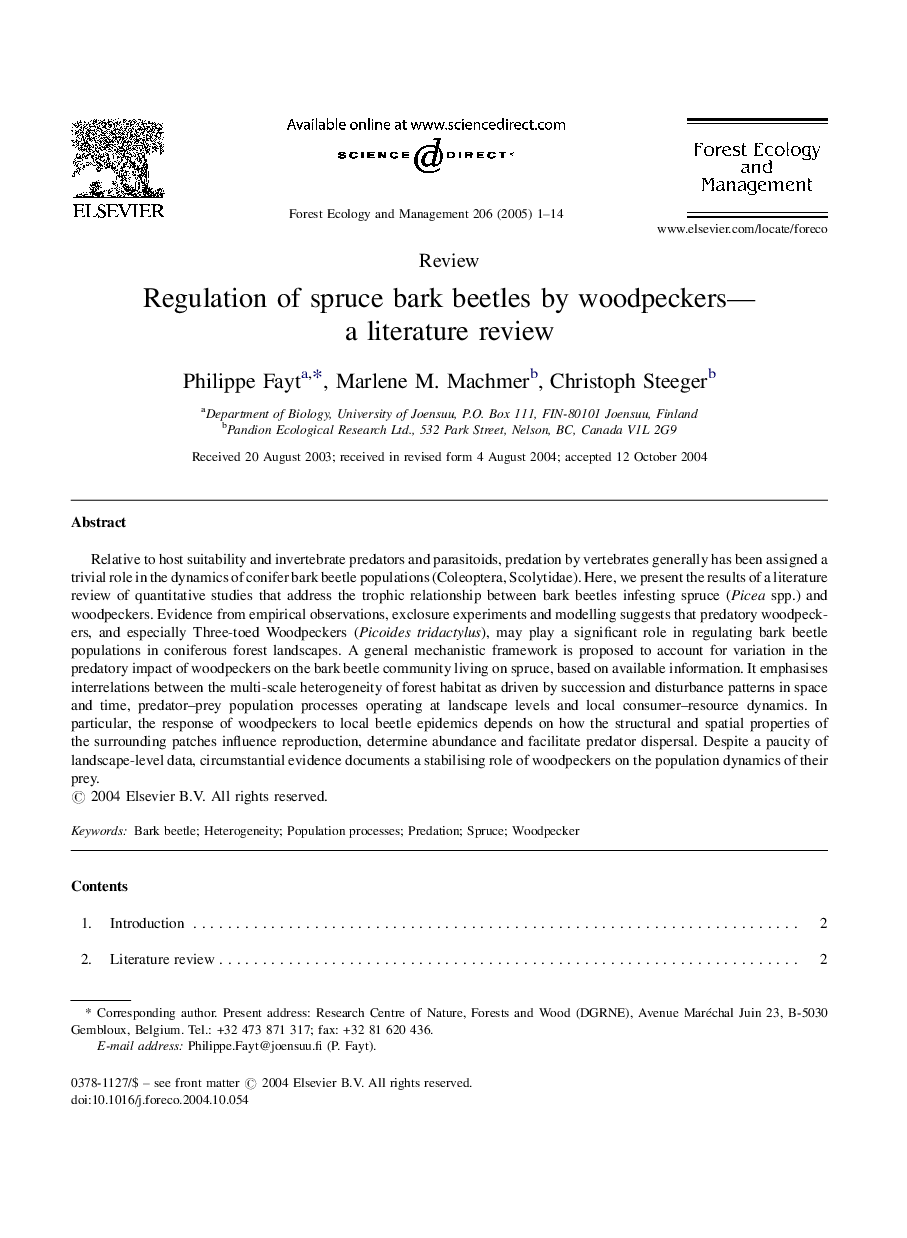| Article ID | Journal | Published Year | Pages | File Type |
|---|---|---|---|---|
| 9620458 | Forest Ecology and Management | 2005 | 14 Pages |
Abstract
Relative to host suitability and invertebrate predators and parasitoids, predation by vertebrates generally has been assigned a trivial role in the dynamics of conifer bark beetle populations (Coleoptera, Scolytidae). Here, we present the results of a literature review of quantitative studies that address the trophic relationship between bark beetles infesting spruce (Picea spp.) and woodpeckers. Evidence from empirical observations, exclosure experiments and modelling suggests that predatory woodpeckers, and especially Three-toed Woodpeckers (Picoides tridactylus), may play a significant role in regulating bark beetle populations in coniferous forest landscapes. A general mechanistic framework is proposed to account for variation in the predatory impact of woodpeckers on the bark beetle community living on spruce, based on available information. It emphasises interrelations between the multi-scale heterogeneity of forest habitat as driven by succession and disturbance patterns in space and time, predator-prey population processes operating at landscape levels and local consumer-resource dynamics. In particular, the response of woodpeckers to local beetle epidemics depends on how the structural and spatial properties of the surrounding patches influence reproduction, determine abundance and facilitate predator dispersal. Despite a paucity of landscape-level data, circumstantial evidence documents a stabilising role of woodpeckers on the population dynamics of their prey.
Related Topics
Life Sciences
Agricultural and Biological Sciences
Ecology, Evolution, Behavior and Systematics
Authors
Philippe Fayt, Marlene M. Machmer, Christoph Steeger,
